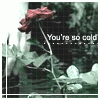Texture Filter> "Bilinear" (default), "Trilinear", or "Anisotropic"
Triple Buffer> "On" of "Off" (default)
V-Sync> "On" or "Off" (default)
What are they differences in these settings? Which one will look the best? Which one will play the smoothest?
Thanks,
Nathan

















 Sign In
Sign In Create Account
Create Account

